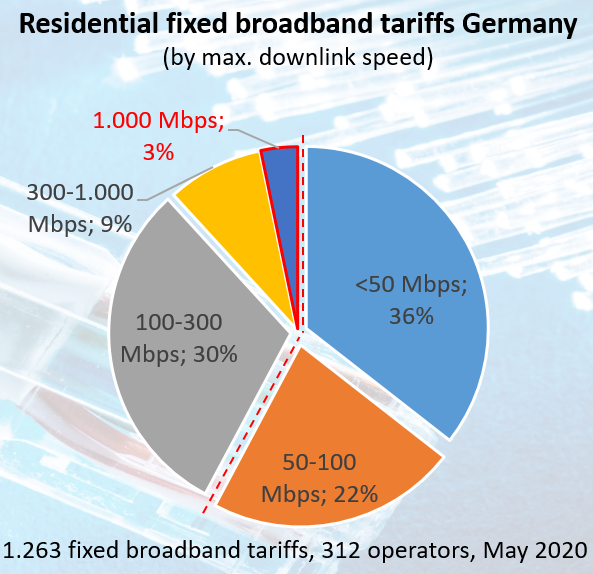How is Germany proceeding towards (fixed) Gigabit Internet access?

While the average (residential) fixed broadband user in is still ‚stuck‘ with a <100 Mbps connection in downlink, operator offerings are slowly evolving to higher speeds: Already 42% of the tariffs offered focus on (max.) speeds >100 Mbps. However, the share of true ‚Gigabit‘ tariffs remains fairly low at 3% and is restricted by the limited geographic penetration of high speed cable and fiber. Meanwhile, the combination of 50 Mbps downstream and 10 Mbps upstream remains most common, making up almost 9% of all tariffs on the market. The second most common tariff is 100 Mbps downstream / 40 Mbps upstream – again a speed level that can be covered via the popular legacy technologies DSL and HFC. The restrictions of using these technologies (vs. end-to-end FTTH/B) also become obvious when reviewing the relation of upstream to downstream bandwidth. While upstream bandwidth in the average FTTH/B tariff is 41% of the offered downstream bandwidth, in designated DSL and HFC tariffs this value is restricted to a mere 17%, reflecting the optimization of downstream vs. upstream bandwidth in the legacy technologies.
#gigabit #broadband #telcos #germany

Recent Comments